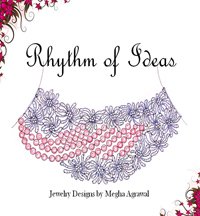Diamond Cut Proportions
It’s very important to cut the diamond
into standard proportions. This is because, even a slight difference in the proportion
can influence the sparkle of diamond to a great extent.
So, on this page I'll explain you about diamond cut proportions and you will get to know how deviation from standard cut proportion affects the sparkle of diamond. Sparkle is the combination of Fire (dispersion of white light in colored light) and Brilliance (mirror-like effect).
Also, I will tell you how one can check the proportion of diamond without aid of any instrument. However, Please note that explanation given in this article holds true for round diamonds (the most popular shape) only and may not be applicable on other diamond shapes.
So, following are the topics that are covered on this page:
- Proportion of Girdle Thickness to Girdle Diameter
- Proportion of Table Diameter to Girdle Diameter
- Crown Height and Crown Angle
- Pavilion Depth and Pavilion Angle
However sometimes, from commercial point of view, proportions are often ignored to retain maximum weight or at times to create illusion of bigger diamond. But, unfortunately this approach can adversely affect the overall sparkle of diamond.
Still this approach is practiced because poorly proportioned stones are more profitable for dealers which is due to these stones retaining more weight of the rough or uncut diamond. This enables the dealer to sell it as a bigger diamond and get more money for it, even though it sparkles less.
Proportion of Girdle Thickness to Girdle Diameter
The girdle is the edge or border of the stone that forms its perimeter. It is the edge formed where the top portion of the stone meets the bottom portion. It is the dividing line between crown and pavillion.
The girdle diameter of a diamond is the distance between the 2 opposite corners of girdle edge along the girdle plane.
Ideally, girdle should be very thin, as it enhances the brilliance of diamond by allowing total reflection of incident light through it. While, a thick girdle refracts the light into air instead of reflecting and this reduces the brilliance.
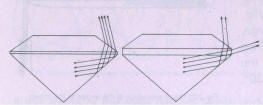 |
| Girdle Thickness Comparison |
But, it has to be noted that if the girdle is too sharp then it can lead to fracture at the time of stone setting which can produce nicks and cleavage cracks.
The thickness of the girdle is expressed as percentage of the girdle diameter. Girdle thickness depends on the size of the stone and its thickness may vary along the girdle edge. Its thickness is graded as:
- Very Thin
- Thin
- Medium
- Thick
- Very Thick
Girdle Thickness Measurement
Thickness of girdle is examined throughout the girdle edge of diamond. While examining the girdle, following two points need to be considered:
- For proportion measurement of the girdle thickness, wider areas of girdle (i.e. 16 intersection points of main and girdle facets) are observed.
- While visual judgment (viewing through 10X magnification) is done by observing girdle as a whole that includes both narrow and wide areas of girdle.
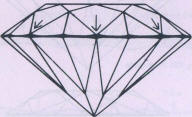 |
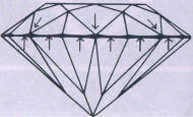 |
| Measurement of Girdle Thickness | Visual Evaluation of Girdle Thickness |
Since, the girdle thickness is dependent on size of stone, so no standard or ideal size can be assigned for girdle.
Proportion of Table Diameter to Girdle Diameter
Table is the largest facet on a stone. The term table spread is used to describe the width of the table facet, often expressed as a percentage of the total width of the stone.
Being the largest facet, table has the maximum influence on brilliance of diamond. Larger is the table, more is the reflection and refraction of light through the table. So, now you will think that why not cut the table as large as possible. But think again, as this will lead to compromise on crown facets and upper girdle facets.
Crown facets and girdle facets disperse the light refracted back out of the diamond which gives diamond the fire effect. So, if the crown facets and girdle facets are compromised then there won’t be enough fire.
Diamond with high brilliance but not enough fire will look foggy.
Thus, an optimal ratio between the maximum light reflection through the table and maximum dispersion through crown and girdle should be considered. The ideal size of the table is 56% to 62% of the girdle diameter.
However, in commercially cut diamonds, tables are kept proportionally large. Reason being larger the table more is the weight retention. In this case, although diamond looks bigger than an ideal cut diamond but its fire is adversely affected.
Table Size Measurement
Table size is measured through small table gauges with millimeter as its least count. The distance between two opposite corners of the table is measured. But at times table is not uniformly cut, so it’s advisable to measure the table in four different directions. Largest of the 4 values is then used to calculate its percentage of girdle diameter through following formula:

How to estimate Table size without any instrumental aid?
By comparing the lines of the table edges you can get an idea about size of table. Such as table size between 54% and 59% of the girdle diameter will have smaller table with the table edge lines curved inwards towards the center of the table. But, with the increase in table size, the edges of table start bending outward.
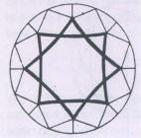 |
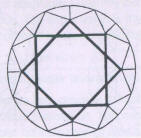 |
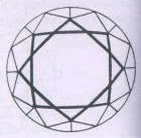 |
| Inward Bending Table Edges | Straight Table Edges | Outward Bending Table Edges |
I can assure you that with practical knowledge and practice over a period of time you can easily estimate the approximate table size. In order to practice estimating the table sizes you can start by estimating the table measurement visually.
This will be really helpful and guide you at the time of buying diamonds when you can verify the table size without the use of any instrument. However, if you don't feel confident enough then ask the dealer, after all you now know the ideal table proportion.
Crown Height and Crown Angle
Crown height is the distance between girdle and table planes. Crown height has quite an impact on dispersion of light through diamond.
For the fixed crown angle, as the crown height decreases, the size of crown facets decreases leading to reduced light dispersion through it.
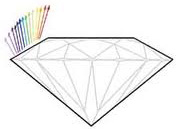 |
| Dispersion of Light through Crown |
These days trend is that diamonds are often cut with shallow crown which results into larger table (with fixed crown angle) for maximum weight retention. But this results into reduction in dispersion of light through crown facets as mentioned above.
Crown Angle
Crown angle is the angle that is formed at point of intersection of girdle plane and the crown of the diamond. An ideal crown angle is 34.5o.
You can estimate the crown angle of a diamond without any instrumental aid by using the following technique:
- Hold the table and the culet of diamond between the tweezers with girdle in horizontal direction as shown below. But, be careful while holding diamond as culet is very sensitive and can be easily damaged.
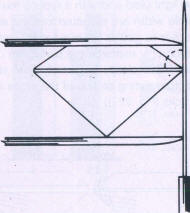 |
| Diamond Holding Position for Estimating Crown Angle |
- Imagine a line perpendicular to the girdle which forms an angle of 90o with the plane of girdle.
- Now divide this right angle into three equal parts of 30o each. The crown main facets should ideally lie just above the first 30o imaginary slot (i.e. 34.5o). If the facets lie inside third 30o slot then the crown angle is clearly too large meaning large table. On the other hand, if the facets lie inside the first 30o slot then it means crown angle is clearly too small leading to smaller table.
Pavilion Depth and Pavilion Angle
Pavilion depth is the distance between culet and the girdle plane of diamond and the pavilion angle is angle formed between girdle plane and pavilion facet.
For the fixed girdle diameter, variation in pavilion depth and pavilion angle affects the amount of light (falling from table on pavilion) reflected and refracted through pavilion of diamond.
In ideal scenario, light falling from table onto pavilion should be total internally reflected back which enhances the brilliance of diamond.
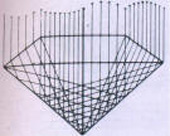 |
| Reflection of Light Through Pavilion |
Ideally, pavilion depth should be 43.4% of the girdle diameter and pavilion angle should be 40.8o. As shown below, for a fixed girdle diameter, the pavilion angle changes with increasing depth of the pavilion:
| Pavilion Depth (%) | Pavilion Angle (o) |
|---|---|
| 40 | 38.7 |
| 41 | 39.4 |
| 42 | 40.0 |
| 43 | 40.7 |
| 44 | 41.3 |
Note that in a round diamond, there’s a dramatic loss of sparkle if the angle is even a one-tenth of a degree above 41.5 or below 40 degrees.
Return from Cut Proportions to Cuts of Diamond page
Return from Cut Proportions to Diamond Jewelry Homepage
I hope you'll not mind sharing this on Twitter, Facebook and with everyone else :)
Feel free to share if something is in your mind and want it to be covered on this site.
My Newsletter
Did you liked this article? Sign-up my FREE weekly newsletter and I'll send you more awesome new additions on this website along with latest jewelry happenings around the world, and download my Jewelry Design Album for FREE!
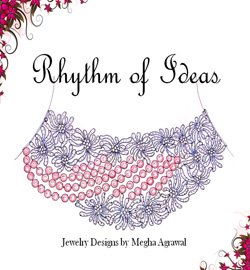 |
|

